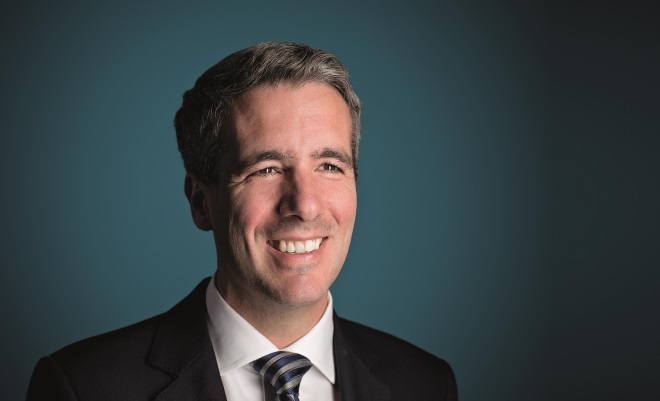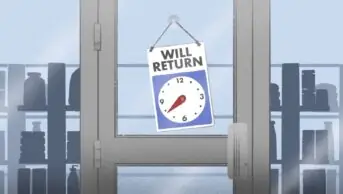
shutterstock.com
“Can I speak with the pharmacist in private?” It is Saturday lunchtime and this central London pharmacy is becoming busy. The pharmacist ushers the anxious customer into the consulting room.
Within a few minutes, a queue has formed at the medicines counter — several customers are waiting to buy pharmacy medicines. A second queue is growing at the prescription counter and the telephone in the dispensary starts to ring.
Behind the counter an experienced staff member is left to field questions, recommend products and check names and addresses on prescription bags before handing them over the counter.
Shortly, the reassured customer emerges, followed by the pharmacist — the registered professional who is legally obliged to supervise all sales and supply of medicines.
“It’s a really grey area,” says the pharmacist, who has asked to remain anonymous as he recounts a typical Saturday and explains the reality and, arguably, the absurdity of ‘supervision’.
“I can’t be in two places at once. And unless I’m shackled to the dispensary, I’m not going to oversee every supply,” he says. “I allow my staff to continue to make sales and to hand over prescriptions because I trust them.”
It makes sense. The pharmacist is still available to answer queries should they arise and counter staff are trained to know when to seek advice. Or at least they should be. “If I’m working with counter staff who I don’t know so well, then I’ll tell them what they can and can’t do while I’m in the consulting room, stock room, or in the toilet for that matter,” he says. “It’s just not feasible for the pharmacy to grind to a halt every time I’m out of earshot.”
The safe supply of medicines is at the core of what pharmacists do and legislation underpinning the operation of pharmacies — including the Medicines Act 1968, the Responsible Pharmacist Regulations 2008 and the Human Medicines Regulations 2012 — holds someone accountable if a dispensing error is made and seeks to ensure that patients and customers are protected. This is not peculiar to the UK. Pharmacies around the world — including in much of Europe, the United States, Canada and Australia (except in certain remote locations) — are governed by rules that require a pharmacist to be physically present and available.
This makes sense, too. An absent pharmacist cannot intervene.
But pharmacy is changing and the role of pharmacists is adapting with it. Some argue that an expanded role for pharmacists — in particular providing more of the services traditionally the preserve of general practice, such as flu vaccines and advice on the treatment of certain self-limiting conditions — is being hindered by legislation governing the dispensing of medicines.
“Changes need to be made to enable the pharmacist to do all of those clinical things that they are being encouraged to do, while at the same time protecting patient safety,” says Ash Soni, president of the Royal Pharmaceutical Society (RPS), of which this journal is the official publication. “If I am providing a new service, I may need to spend more time as a pharmacist in the consulting room.”
Soni is one of the members of a new working group, set up by the four UK chief pharmaceutical officers, to consider supervision as part of the rebalancing medicines legislation and pharmacy regulation programme. Under the first part of its work programme, the rebalancing board has proposed the introduction of a defence against dispensing errors as a criminal offence.
The supervision working group, which comprises representatives from the Department of Health, the General Pharmaceutical Council (GPhC), the RPS, the Pharmaceutical Society of Northern Ireland, the Association of Pharmacy Technicians UK (APTUK) and Pharmacy Voice, is due to submit a paper to the board in March 2016 outlining recommended changes to supervision.
Roots of responsibility
There are three types of activity related to medicines that the pharmacist is directly responsible for: the assembly of medicines (boxing and labelling), which falls under the Medicines Act 1968; and the sale of both POM (prescription only medicines) and P medicines (pharmacy medicines), covered by the Human Medicines Regulations 2012 (see ‘Human Medicines Regulations 2012 – clause 220’). All of these activities have to be conducted by a pharmacist or under the supervision of a pharmacist.

Source: Charles Russell Speechly
The Pharmacy and Poisons Act 1933 did not spell out what ‘supervision’ means, so it has been defined by case law, says Noel Wardle, a partner at law firm Charles Russell Speechlys
The roots of these responsibilities stretch back to the Pharmacy and Poisons Act 1933. “The Poisons Act contained what we still have now; that specific classes of medicines, as they are now, can only be supplied by a pharmacy or under the supervision of a pharmacist,” says Noel Wardle, a partner at Charles Russell Speechlys, which specialises in business law.
However, what ‘supervision’ means was never laid down in the act, so it has been defined subsequently by case law.
In a case brought against Littlewoods[2]
in 1943, a medicinal product was sold in one of the company’s pharmacies to a Pharmaceutical Society inspector while the pharmacist was not in the dispensary, but upstairs in a stock room. “The court had to decide whether that sale was made under the supervision of a pharmacist, and it decided that it was not, because while the pharmacist was present on the premises, he wasn’t in a position to intervene at the point that the sale was being made. He didn’t know that the sale was being made and wasn’t in a position to stop it,” Wardle explains. “There has been no change since that time.”
A decade later in 1953, a subsequent case involved Boots[1]
, which had introduced product displays where patients could pick up a medicine and put it in their basket, rather than have to ask for it at a counter. “The court said that the sale isn’t effected until the payment is made and the goods are handed over by the counter assistant so [it’s] at that stage [that] there needed to be supervision,” Wardle says.
Since 2005, pharmacy technicians have been able to join a professional register, something that became mandatory in July 2011. There is growing acceptance that pharmacy technicians could assume some of the responsibilities traditionally undertaken by pharmacists, freeing up some of the pharmacist’s time.
“A pharmacist involved in putting tablets in packets and labels on bottles is not a pharmacist using their skills to best effect,” says Mark Koziol, chair of the Pharmacists’ Defence Association (PDA), a body that looks after the interests of employee and locum pharmacist members. “This is where we believe that suitably trained support staff could come in, who are trained to assemble medicines, who are trained to concentrate on consistency and on accuracy, who are not being disturbed every 30 seconds by a clinical inquiry.”

Source: Tess Fenn
The technical aspects of medicines supply could be delegated to pharmacy technicians, says Tess Fenn, president of APTUK
Tess Fenn, president of APTUK, the professional leadership body for pharmacy technicians, says that technicians would be prepared to assume greater responsibility for the supply of medicines. “Once pharmacists have clinically screened a prescription — signed and approved that it is actually appropriate for that person, whether it be a new prescription or a repeat — the process could then be delegated to a pharmacy technician,” she says. “There’s a slight debate about issuing it, but I would state that it could be issued to the patient as well.”
It is also now technically possible for a pharmacist to intervene in a supervisory role while not on the premises. But remote supervision, using apps or video conferencing, is not allowed under the Responsible Pharmacist Regulations, Wardle points out. The Health Act 2006 requires each registered pharmacy premises to have a responsible pharmacist in charge and largely on the premises in order to operate lawfully (the one pharmacy/one pharmacist rule).

Source: Pharmacists’ Defence Association
Pharmacists need to have direct contact with patients, according to Mark Koziol, chairman of the Pharmacists’ Defence Association
Koziol is adamant that the pharmacist should be involved in every single patient intervention; not only available but present. “It is not as simple as looking at a prescription on a computer screen remotely. You actually need to be in front of the patient because sometimes that patient, their demeanour, their colour, their sweating, their breathing, etc, all gives you a further clinical insight into what may or may not be a problem with them and their medication.” At the same time, the pharmacist should look at the patient’s summary care record to get a wider view of the treatment they are receiving.
Face-to-face contact with patients is also vital for maximising the effectiveness of medicines, Soni argues. Around 80% of medicines are given on repeat prescription, but people’s lives change from month to month and it is sometimes necessary to check if those changes have an impact on a patient’s medicines — either by identifying a safety issue or by flagging the use of a medicine that is no longer needed. “Where medicines do not work as effectively as they should, they are not cost-effective, patient adherence falls, the condition meant to be treated worsens, and the risk of a secondary care admission goes up,” says Soni.
All change?
The rebalancing medicines legislation and pharmacy regulation programme is reviewing existing medicines legislation with the aim of revamping it so that it supports rather than hinders the development of pharmacy.
The terms of reference for the rebalancing board’s supervision working group were published on 7 January 2016.
According to the terms of reference, the group is tasked with ensuring that patients, the public and other healthcare professionals have access to “clinical pharmacists” while ensuring that the sale and supply of medicines from registered pharmacies remains safe and becomes more efficient. “This includes the deployment of modern technologies and more effective use of the whole pharmacy team, including registered pharmacy technicians,” the terms state.
For now, two of the major stakeholders with representatives on the group — the Department of Health and the GPhC — are reluctant to discuss the group’s work and how legislation around supervision needs to change until specific proposals are made by the working group.
To enable POM or P medicines to be supplied while a pharmacist is on the premises but not in a position to intervene directly would require changes to the third point of paragraph 2 of clause 220 in the Human Medicines Regulations, says Wardle.
“Acts under the supervision of a pharmacist”, for example, could be widened to “under the supervision of a pharmacist or technician”, or the wording changed to “under the authority of a pharmacist” or “with the oversight of a pharmacist” to circumvent the case law decisions, he suggests. Alternatively, supervision could be specifically defined in the legislation.
To enable the pharmacist to supervise while not in the pharmacy would also require a change to the first point of paragraph 2 in clause 220. At the moment, for a pharmacy business to be lawful the premises must be under the control of a responsible pharmacist who is on the premises the majority of the time. Changes to the Responsible Pharmacist Regulations could also be made.
The Responsible Pharmacist Regulations 2008 state that general sales list (GSL) products can continue to be sold if the responsible pharmacist is absent for up to two hours within the day, and all medicines can continue to be sold or supplied if another pharmacist is present in the pharmacy. Wardle suggests: “The Responsible Pharmacist Regulations could be amended to extend the period during which POM and P medicines can be sold in the absence of a responsible pharmacist.”
However, Soni says the two-hour time period is not something that the RPS would like to see extended. It wants to see the one pharmacy/one pharmacist rule retained and for the responsible pharmacist to have to remain largely on the premises. Otherwise, a pharmacist employee of a large multiple might find themselves in a position where they are expected to supervise several pharmacies remotely. “Medicines are becoming more complex, and polypharmacy and multi-morbidity is creating a level of complexity that requires greater intervention by pharmacists not less,” he says.
Delegation, delegation, delegation
The vast majority of clinical services that are likely to be performed by pharmacists will still require them to be in the pharmacy, but perhaps in a consulting room rather than in the dispensary.

Source: Simon Wright Photography / The Pharmaceutical Journal
Pharmacists need to be able to delegate a wider range of tasks, says Ash Soni, president of the RPS
Soni says that, while it is important that the responsible pharmacist continues to be present and always accessible, they should be able to delegate a wider range of tasks that do not require direct supervision. The dilemma at the moment is that pharmacists are accountable for the actions of staff where activities have been delegated appropriately. This is what needs to be addressed in the legislation, he says.
Following the introduction of the Responsible Pharmacist Regulations, the GPhC issued guidance on what could be done in the absence of the responsible pharmacist. It says that the assembly of medicines does not need to take place under the supervision of a pharmacist.
“The pharmacist doesn’t have to stand over the dispenser and watch a dispenser label a medicine, provided the pharmacist will at some point during that process see what has happened and check what has gone on,” Wardle says. However, the sale and supply of medicine must take place under the supervision of a pharmacist.
Wardle says it would not be difficult to redefine the law to change the regulations around supervision. The difficulty is in determining by how much the supervisory role needs to be loosened and what should be put in its place.
“To what extent is the pharmacist responsible for an activity that took place while they were not present on the premises and to what extent do they have personal liability,” he asks. This could be particularly difficult in a situation when indemnity cover is fragmented, with the pharmacist insured by one organisation and the pharmacy and the technician by another. “At the moment the pharmacist bears ultimate responsibility for what goes on in the pharmacy,” says Wardle. The question over who bears financial responsibility for an error when legally the pharmacist is permitted to be absent opens up a wider debate. “It is not just about criminal liability.”
Others, meanwhile, have concerns about how the rules around supervision could change.
“The government says that as long as the systems and processes are safe and protocols are in place then the pharmacist can remotely supervise the quality process from somewhere outside of the pharmacy,” says Koziol.
This isn’t feasible with patients constantly coming in requiring on-the-spot advice, he argues. And such a move would make little sense given that patients are encouraged to go to a pharmacy rather than a GP with their minor health problems and for certain services. “Changes need to be made in the approach to supervision to make the pharmacist more available to the public not less available.”
Human Medicines Regulations 2012 – clause 220
Clause 220 of the Human Medicines Regulations 2012, which govern the sale or supply of medicinal products not subject to general sale, states:
220.—(1) Unless paragraph (2) applies, a person (“P”) may not sell or supply, or offer for sale or supply, a medicinal product that is not subject to general sale.
(2) This paragraph applies if—
(a) P is a person lawfully conducting a retail pharmacy business;
(b) the product is sold, supplied, or offered for sale or supply, on premises that are a registered pharmacy; and
(c) P or, if the transaction is carried out on P’s behalf by another person, that other person is, or acts under the supervision of, a pharmacist.
References
[1] All England Law Reports: Law Reports: 1936 – 1999: 1953: Volume 1: Pharmaceutical Society of Great Britain v Boots Cash Chemists (Southern) Ltd [1953] 1 All ER 482. Available from http://www.bailii.org/ew/cases/EWCA/Civ/1953/6.html
[2] All England Law Reports: Law Reports 1936 – 1999 1943 Volume 1 Roberts v Littlewoods Mail Order Stores Ltd [1943] 1 All ER 271.


